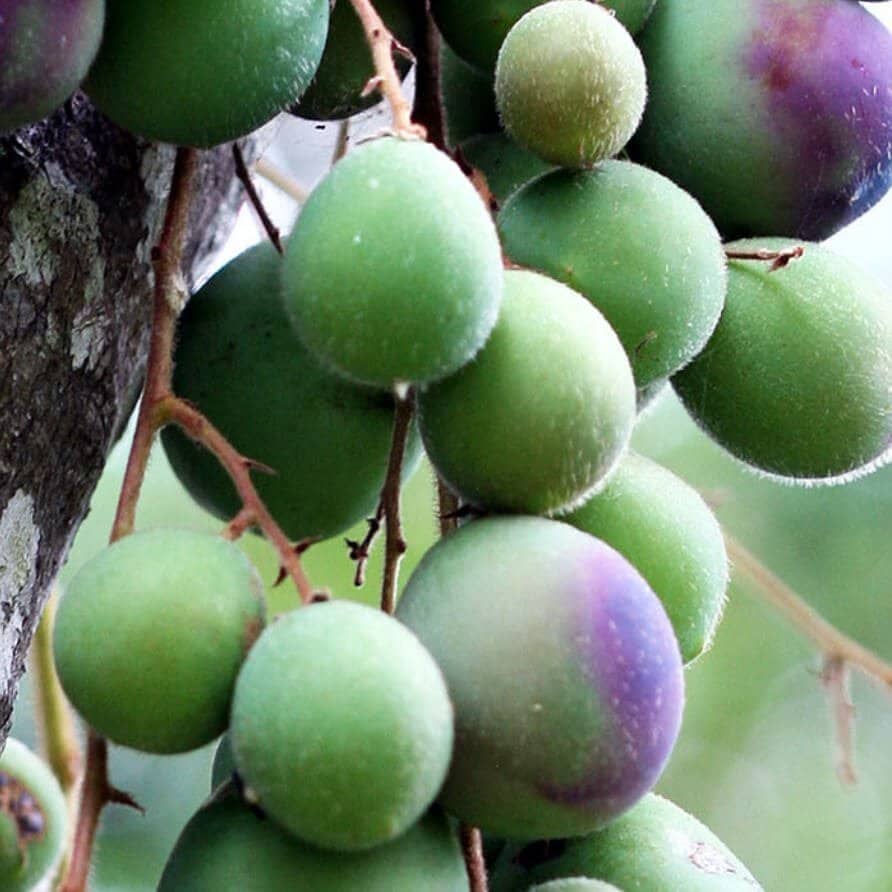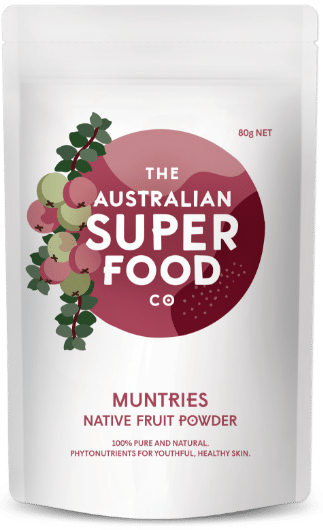Growing on a low shrub or ground cover, muntries (also known as Kunzea pomifera) are found along Australia’s southern coast in Victoria and South Australia. The fresh fruit is available from February to March.
Highly valued by the Aboriginal people in Victoria and South Australia, muntries have long been an important part of diet, and the dried lather was exchanged for valuable tools. Traditionally, the berries were consumed fresh, dried and pulped for later use, or dried and traded with other tribes. Early settlers used the berries in cakes, jams and chutneys.
Download The Australian Superfood Co provenance map here.
Flavour:
A sweet, spiced apple flavour with a slight apple-juniper essence and subtle berry notes.
Palate:
A delicate, slightly diluted, berry flavour on the tongue, with notes of juniper, and subtle notes of spiced apple and pear.
Aroma:
Initial spiced cinnamon and berry notes, not dissimilar to Riberry, with lingering fruity, cotton candy aroma.
Muntries are a delicious and versatile fruit that can be eaten fresh or used in sweet and savoury dishes. Popular recipes containing muntries include jam, chutney, pies, wine, desserts, and sweet and savoury sauces. They add a native touch to fruit salad and platters, salads, ice cream and handmade chocolates. They can be used instead of apples or sultanas in a recipe, and its spicy, fruity flavour creates a rich, refreshing fruit paste that pairs well with cheese.
Muntries pair well with many dairy products (including yoghurt, most cheese varieties and cream), oil and vinegar-based meat marinades and salad dressings, meat-based jus and egg-based condiments.
They complement white fish, chicken, pork and lamb, and are perfect for game meat such as emu, crocodile, kangaroo and venison.
Muntries lift the profile of alcoholic beverages such as gin, vodka and white rum, and adds a sweet, refreshing twist to soda, tonic, mineral waters and lemonade.
The antioxidants and wax from the muntrie fruit are also extracted to make hand cream and other specialist beauty products.
Click here for delicious Muntrie recipes.










